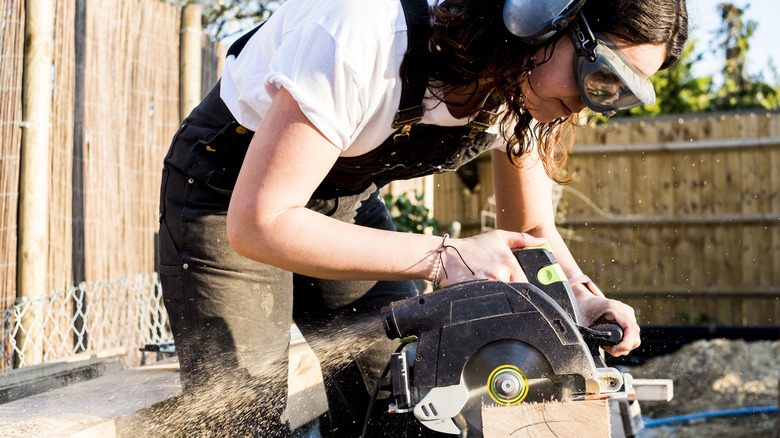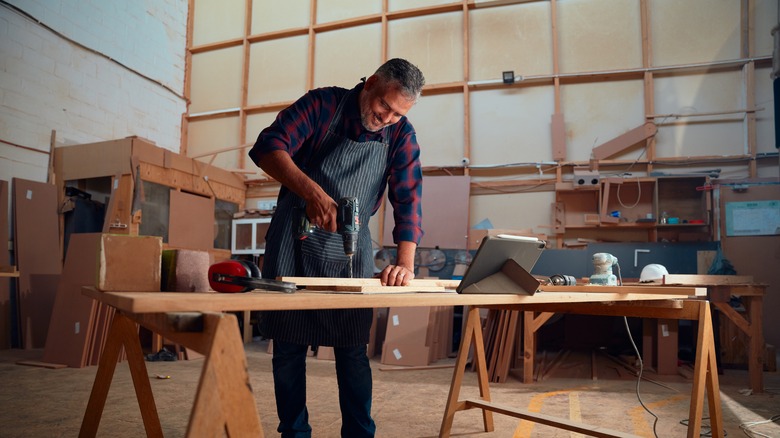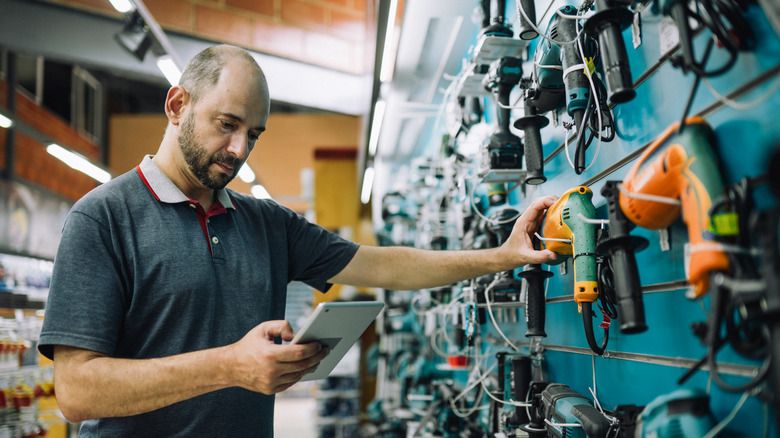How To Get Power Tools For Free So You Can Build The DIYs Of Your Dreams
The funny thing about DIY is that sometimes, by the time you've bought all the tools and materials you need to make an item, you've spent way more money than if you'd just bought the darn thing from the store. But there are other benefits to DIY aside from saving money, like controlling all the little details and learning new skills. You can cut down on the cost of some DIY projects by borrowing the necessary tools instead of buying them.
Most major cities have at least one tool library available. A tool library works just like a regular library, except instead of borrowing books, you can check tools out for free. Offerings vary, but larger tool libraries have thousands of tools available, including hundreds of power tools: drills, grinders, sanders, saws, rotary tools, planers, staple guns, and much more.
You can also borrow power tool accessories, hand tools, ladders, work tables, and safety equipment. Many libraries also stock other DIY equipment, like sewing machines, Cricut cutters, embroidery machines, 3D printers, button makers, crochet kits, knitting kits, and quilting machines. Here's what to know and how to find one.
How to find and use a tool library
Some tool libraries are independent organizations, while others are programs within public libraries. To find one near you, search this tool library map, reach out to your local public library, or try Googling your city and the terms "tool library," "MakerSpace," and "Library of Things." To borrow tools, you typically have to be an adult resident of the city in where the library is located, and you have to be a member of the library. While many are free, some tool libraries ask for donations — the Chicago Tool Library, for example, is pay-what-you-can.
The process is largely similar to checking out books. You may have to wait for a tool to become available. You get each tool for a set number of days, and can borrow a certain number of tools at a time.
However, tools are a lot more expensive and potentially dangerous than books. If any tools are late, lost, or broken, you'll have to pay or be barred from future borrowing. You may have to sign a waiver stating you can use the tools safely and that the organization isn't responsible for defective tools. Some libraries offer tool safety courses for members; if yours doesn't, you can learn all about tool safety tips for beginners online. You can take most tools with you on-site, but for other DIY equipment, you may have to use it at the library — you often can't take a sewing machine home, for example.
When to borrow and when to buy
Libraries aren't the only places to borrow tools and DIY equipment. Home improvement stores like Ace Hardware, Lowe's, and Home Depot also offer tool rentals — it's not free, but it can still be much less expensive than buying a tool. You can also check Buy Nothing groups on Facebook to see if a neighbor is willing to gift or lend you a certain item, though there are fewer protections in place there if something goes wrong.
Sometimes, it's better to buy a tool instead of borrowing it. As a general rule, it's worth buying a tool if you're sure you will be using it often, you can afford to buy it, and you have the tool storage space for it. Buying also has benefits — you can be pickier about brands, work on your own timeline, and not worry about accidental damage so much. However, when buying is impossible or doesn't make sense, borrowing can open up doors to create the DIY projects of your dreams.


